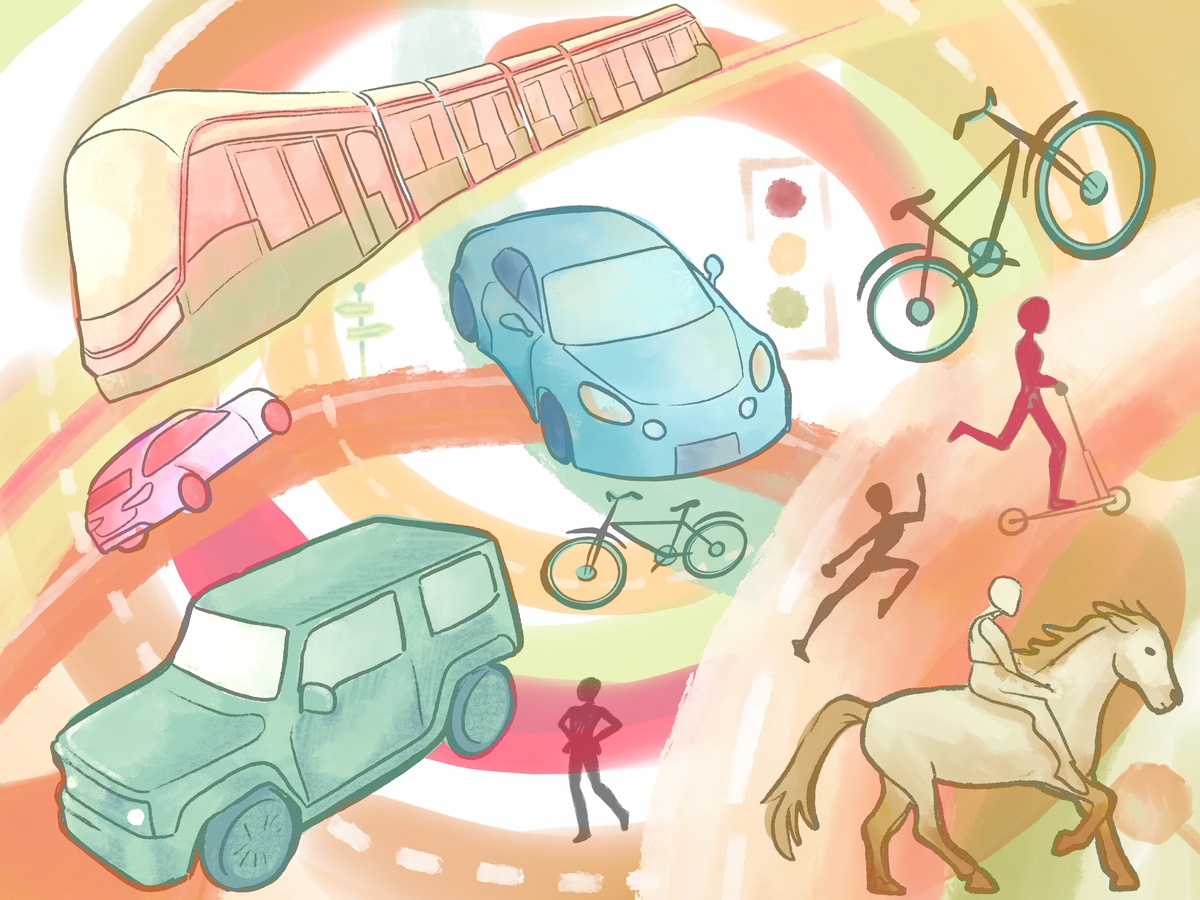Editor’s note: This column was submitted to the Texan by a member of the UT community.
Transportation is the lifeblood of a city, serving as its circulatory system, ensuring the flow of labor, goods and waste. It’s a cornerstone of our daily lives, a fundamental element, and its significance can’t be overstated. Yet, it’s also an area where we can’t afford to rest on our laurels. Researchers and practitioners unequivocally agree: our transportation systems demand constant improvement and maintenance.
Efforts are already underway, and we have multiple avenues to explore in pursuit of better transport. Consider the vital role played by the public transit system, its expansion, increased frequency and new routes. These measures are pivotal in ensuring a comprehensive network that serves all corners of our community. Optimizing our existing transportation infrastructure is equally crucial. From smoother roads to reduced congestion, these improvements promise a more efficient and interconnected transportation experience. Balancing the distribution of points of interest and residential areas is yet another piece of the puzzle, bringing us closer to an ideal transportation system that reduces the need for long commutes and encourages sustainable transport options.
Now, let’s turn our attention to transportation at UT-Austin, where we, as Forty Acres members, have first-hand experience with various modes of travel, from public transit to micro-mobilities. Fortunately, CapMetro provides a reasonably convenient and punctual transit option, and alternatives such as walking, biking and E-scooters have gained popularity.
However, can we confidently assert that the current UT transportation services meet all student expectations? Different individuals may have varying perspectives, but, from my point of view, there are four concerns to consider. First, safety while using micro-mobility modes is a critical issue. There have been instances of severe e-scooter accidents, and the condition of pavements around campus, with steep slopes and disrepair, needs attention.
Second, the reliability of public transit services has been questioned. Some of us may recall the shortage of bus drivers last year, leading to the temporary shutdown of transit services in the southern part of Austin. Additionally, the abrupt cancellation of planned bus services without prior notice has been a source of frustration.
Third, the walkability of streets surrounding the campus is a concern, especially Guadalupe during peak hours when congestion poses dangers to pedestrians. Pollution during these times can significantly impact the primary student pedestrian population. Fourth, the scorching summer heat in recent years has made walking on campus from 10 a.m. to 5 p.m. an uncomfortable experience. Considering the likelihood of more frequent extreme weather events in the future, preparations for such conditions should be initiated promptly.
Solutions are within our reach. To enhance micro-mobility safety, collaborating with the City of Austin to improve pavement conditions and publish user guidelines for recommended routes and hazard areas is essential. Addressing public transit issues may require optimization of routes based on ridership data, thereby ensuring efficient resource allocation with CapMetro.
Working with the City of Austin to redesign street networks and enhance the capacity of alternative routes while reducing congestion on streets like Guadalupe can improve walkability. Finally, providing more shaded areas on campus can help combat the discomfort of extreme weather conditions.
By tackling these concerns collaboratively and proactively, we can work towards a safer, more reliable, and sustainable transportation system at UT-Austin, enhancing the overall campus experience.
Chen is a Ph.D. Student with the Community and Regional Planning (CRP) program at the University of Texas at Austin with a concentration in transportation infrastructure and location affordability.
















